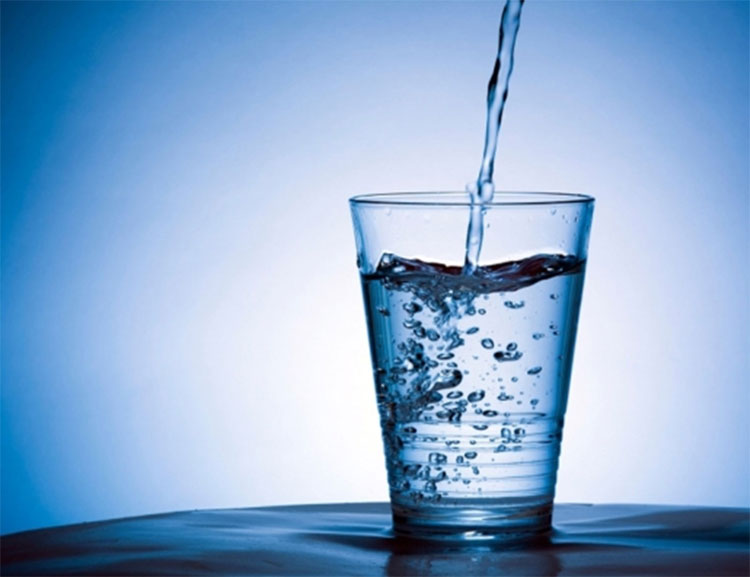The ingredients are hidden in a glass of water
Colorless drinks can contain many different chemicals and algae that many people don't expect.
Chlorine
Water treatment plants add low concentration chlorine to water to disinfect but still ensure safety for human health, according to Popular Sciene. However, some types of disinfectants produce by-products related to the possibility of miscarriage in women.
Pesticides
Pesticides and herbicides can be swept into rivers and reservoirs, seeping into groundwater. Atrazine pesticides produce hormonal imbalances in experimental animals.
Fluoride
When rocks are corroded, they release fluoride naturally into the soil, air and most water sources. Because fluoride can prevent tooth decay by regenerating tooth enamel, many places have added it to drinking water supplies.

The cup you drink may contain many toxic substances and different living things.(Photo: Popular Sciene).
Arsenic
Arsenic occurs naturally in rocks and soil. Organic arsenic is not toxic, but inorganic arsenic may increase the risk of cancer in humans. Water treatment plants are capable of removing arsenic, but water quality needs to be checked periodically.
Lead
Old corroded metal pipes can cause lead poisoning of drinking water, a dangerous neurotoxin. This happened in Flint, Michigan, USA. Children who drink a lot of lead lose their ability to learn due to nerve damage.
Algae
Algae in drinking water can cause fishy odor, unpleasant mold.
Hydrogen Sulfide
Hydrogen Sulfide (H2S) smells like rotten eggs, dirty clothes when washing and corroding pipes.
Salt
Salt is a common ingredient in water. A certain amount of sodium sulfate or magnesium sulfate exists in water with a laxative effect.
Antibiotic
Many antibiotics such as amoxicillin and Zyrtec are excreted in the urine, following the flow of water to rivers, lakes and water supplies. However, this antibiotic only contaminates water at extremely low levels.
Copper
Copper will make the water green to a concentration of 1.3 mg per liter of water. This metal is dissolved from old pipes, but mostly in small concentrations and safe for humans.
- Glass has the ability to 'transform' when meeting water
- Clean water with scrap glass
- Understand the implications with the Cold War telescope
- Animals sleep peacefully in a glass coffin waiting for revival
- What is glass?
- Interesting story behind the glass cup grinding the legendary edge
- Unexpected uses of Gorilla Glass
- Smart glass
- Glass is alien material!
- Glass smashed without breaking
- New type of shockproof glass inspired by nature
- Should I drink diluted salt water early in the morning?
 Green tea cleans teeth better than mouthwash?
Green tea cleans teeth better than mouthwash? Death kiss: This is why you should not let anyone kiss your baby's lips
Death kiss: This is why you should not let anyone kiss your baby's lips What is salmonellosis?
What is salmonellosis? Caution should be exercised when using aloe vera through eating and drinking
Caution should be exercised when using aloe vera through eating and drinking